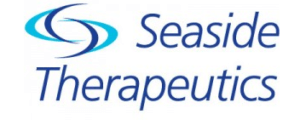 After the International Meeting for Autism Research in Spain, the news organization Reuters published an article titled “Key trial of Seaside autism drug fails to show benefit.” In order to provide context and help the FX community better understand the trial results of this drug with potential applicability to Fragile X syndrome, the NFXF contacted Dr. Paul Wang, the vice president of clinical development at Seaside for additional background and response. We encourage interested readers to review both the original article (linked above) and Dr. Wang’s response. As both the article and Dr. Wang’s response state, further research is planned to better understand the drug’s potential benefits.
After the International Meeting for Autism Research in Spain, the news organization Reuters published an article titled “Key trial of Seaside autism drug fails to show benefit.” In order to provide context and help the FX community better understand the trial results of this drug with potential applicability to Fragile X syndrome, the NFXF contacted Dr. Paul Wang, the vice president of clinical development at Seaside for additional background and response. We encourage interested readers to review both the original article (linked above) and Dr. Wang’s response. As both the article and Dr. Wang’s response state, further research is planned to better understand the drug’s potential benefits.
Comments from Dr. Paul Wang
We at Seaside believe that STX209 has true potential to help persons with FXS and/or autism, and that it is a safe and generally well-tolerated drug. There are many challenges in proving this point to the FDA’s satisfaction, and we very much appreciate the support that the NFXF and its members have provided for our efforts. The results of our recent study of STX209 (arbaclofen) in patients with autism show how challenging drug trials can be, whether or not the drug being studied actually works. In particular, there are two points that I would like to highlight.
1) Placebo effect
The article from Reuters news agency starts out by saying that STX209 “failed to improve symptoms of social withdrawal” in the autism study. Technically, that’s not true. The study subjects did show improvement (i.e., a decrease) in social withdrawal, but there was an equal improvement in the subjects who were treated with placebo. In other words, there was a large placebo effect. Placebo effects are notoriously common in neuropsychiatric drug studies, and they can even mask the effects of highly effective drugs such as morphine for pain. Nobody totally understands what causes placebo effects, but it is obviously critical for the study subjects, their families, and the study clinicians to try to evaluate the subjects’ response as carefully and as objectively as possible.
2) How to measure improvement
Even though STX209 has been proven to be very effective in animal models of FXS and of autism, it is very difficult to predict how it will affect people who have these conditions. After all, there are enormous differences between mice and humans, even when they both have mutations in the FMR1 gene. The FDA requires companies to pick one, and only one, assessment as the “primary endpoint” of the study. In their eyes, the result on that one pre-selected endpoint makes or breaks the study. In our recent autism study, STX209 did not show an advantage over placebo (see above) on the primary endpoint of social withdrawal, so the FDA and some news reporters regard it as a negative study. In fact, STX209 did show advantages over placebo on a number of other assessments. Some of these secondary endpoints are just as meaningful as the social withdrawal assessment, or even more so, but in the FDA’s eyes, they don’t make the study a positive study, because they were not pre-selected as the “primary endpoint.”
Seaside’s studies of STX209 in children and adults with FXS are finishing up now, and we should have the results this year. While we have heard wonderful feedback from many families in our studies, it is the official results of these trials, seen from the FDA’s perspective, that will determine our future plans for STX209. We thank all of the families who have supported our efforts, whether as study participants or otherwise. We hope that STX209 (and/or the other drugs that are now being studied for FXS) will be able to make a real and meaningful difference in the lives of people with FXS and their families.

